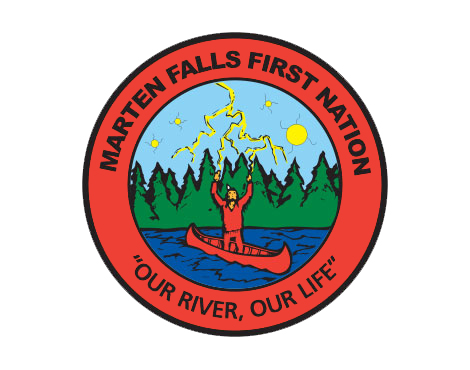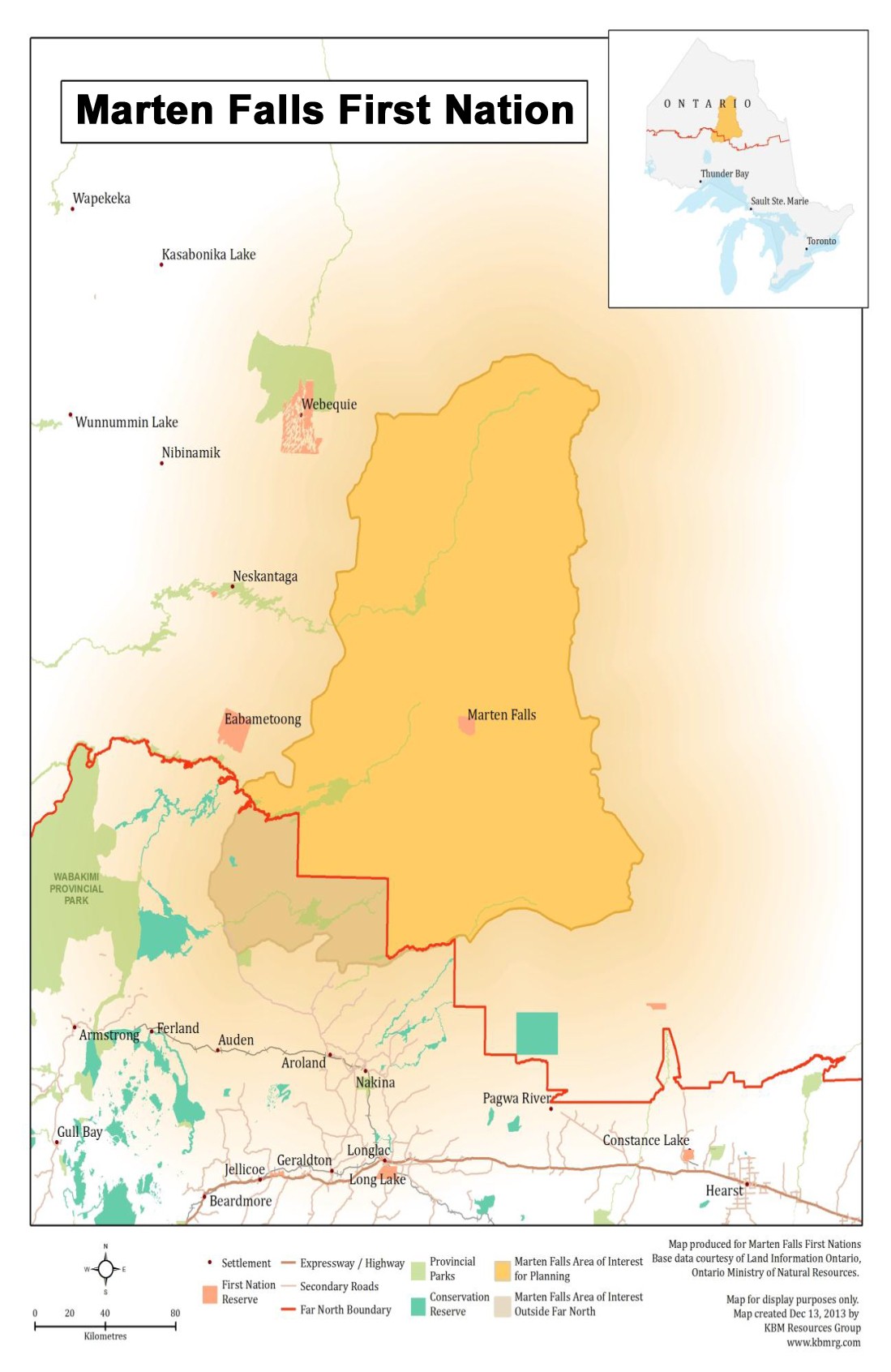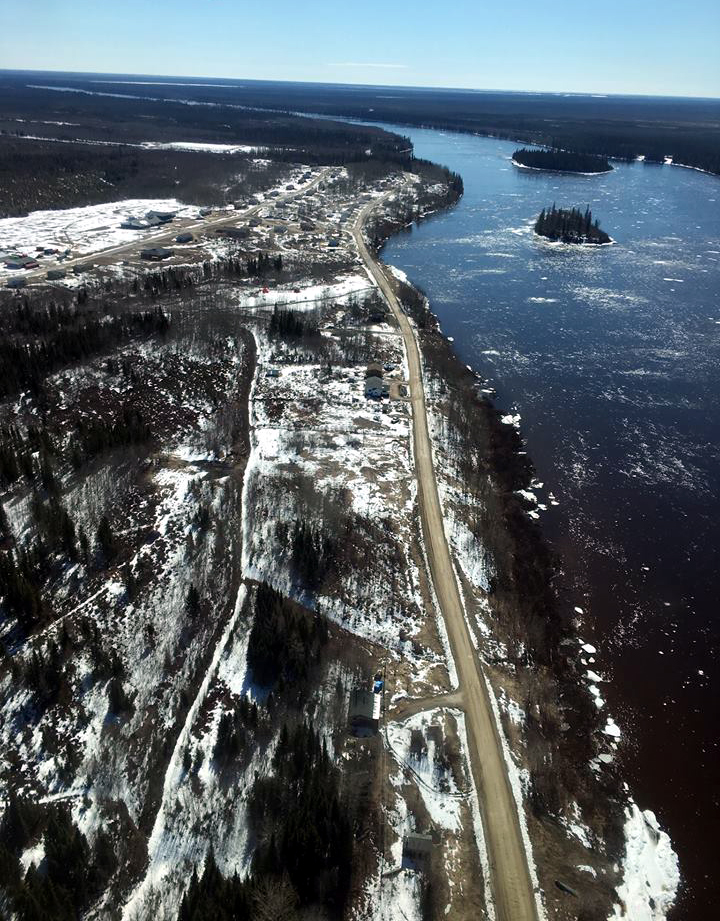





Chief Ambrose Achneepineskum of the Marten Falls First Nation Opens the Annual Members ICDA in April 2018
 Presentation to the ICDA: An Indigenous World View by Chief Ambrose Achneepineskum – Marten Falls First Nation, Canada and The Ring of Fire
Presentation to the ICDA: An Indigenous World View by Chief Ambrose Achneepineskum – Marten Falls First Nation, Canada and The Ring of Fire
Additional Background
Marten Falls First Nation (MFFN) is located 100 air miles (160 kilometres) north of Nakina, Ontario on the junction of the Ogoki and Albany Rivers. The original Marten Falls community relocated to the Albany and Ogoki River junction in 1926. MFFN was originally located at the actual Marten Falls, 50 miles up the Albany River from this current site. The treaty 1905 was signed at the original Marten Falls site.
MFFN is a proud and progressively oriented First Nation community that has adapted well to the changing lifestyle and economies that the 20th century has to offer, at the same time retaining the important customs and cultural teachings that are linked to the lands and river ways that form their way of life.

Development Goals
MFFN goals for any development and land planning are to ensure the protection of areas valued by the community, preserve it’s community’s historical use and relationship to the land and sustain it’s the cultural, environmental and socio-economic objectives of the MFFN membership.
The community wishes to maintain it’s self reliance through the identification of economic development opportunities and identify shared areas to assist in relationship protocols with neighbouring First Nations.
MFFN requres that customary stewardship responsibilities for the land remain intact and infrastructure is done in a manner that is consistent with the recognition and affirmation of existing Aboriginal and treaty rights in section 35 of the Constitution Act, 1982, including the duty to consult.
Guiding Principals
MFFN has the following principles to guide the development and planning process:
1. “Kezhikanawabajikateg kaye ji tepwaaniwaang kekikinozhiwemakaang.”
“Everything on our land and water is living and needs to be respected.”
The land and all of its living creatures are viewed by the Anishnabek as integral to the circle of life and integral to the survival and balance and harmony of the environment that Anishnabek is only one part of.
2. “Kawininitojikateg nikan onajikewining ineke.”
“The Anishnabek relationship to the land should be seen as a cultured landscape; also an area that is continuously being used by the Anishnabek as a habitation and as a resource.”
The Anishnabek are of the land; their customs, identity, and cultures are tied intricately to the land and its resources.
3. “Kakina ji wiinda mawa nowaht anishnabek ka onjiwatch.”
“Engage the Anishnabek on all issues that affect our shared and communal lands.”
All Anishnabek should be treated with respect and therefore, are to be engaged on matters that affect their lives directly.
4. “ jih ishi kanawejikatey kakina kekon”
“Respect the natural and Anishnawbe customs and teachings at all times.”
The Creator put Anishnabek on these lands as stewards of the land to take care of the lands and use the lands and its resources indefinitely. The only conditions were to adhere to the natural and traditional teachings of the elders.
5. “Chi Mamow waban ji kateg emishiinonaniwang mashkawisiinaniwang”
“Looking at it together. In numbers there is strength.”
Land Use
With consultation, the more persons that are directly affected, the more need to be involved in the process; therefore, the process will need to find ways to accommodate Anishnabek people (members and other stakeholders).

This picture I took Saturday, May 6th, 2017, when I was landing at Marten Falls First Nation (Ogoki Post). Its the same place. We are Anishnawbe (Ojbwa). You can see my house down there (the big blue one) which I have lived in since 1996. I have a store in my house and a gas business (I may start this summer). I may move someday. The large river is the Albany River and this is facing east. It flows west to east to James Bay. The community is a fly in. We have 60 houses with a population of 350 and a total membership of 780 around. We would like to have an all weather road in here soon. – MFFN Chief Ambrose Achneepineskum
In the Far North Act, Ontario sets out the following objectives for land use planning, which include a significant role for First Nations in the planning and require the protection of areas of cultural value in the Far North and the protection of ecological systems in the Far North by including at least 225,000 square kilometres of the Far North in an interconnected network of protected areas designated in community based land use plans.
First Nations must benefit from economic development which is sustainable, where biological diversity, ecological processes and ecological functions, including the storage and sequestration of carbon in the Far North are maintained.
Marten Falls First Nation has identified an Area of Interest for Planning (AIP). The MFFN AIP is 4,265,385 hectares in size, situated approximately 276 km northeast of Thunder Bay, Ontario (see Figure 1). First Nation communities located adjacent to this AIP are: Eabametoong, Aroland, Webequie, Neskantaga, Attawapiskat, Constance Lake, Fort Albany and Kashechewan.
In traditional understandings among First Nation communities, shared land use and widespread travel by community members is customary. MFFN respects adjacent communities’ shared uses and interests within the AIP. The AIP is mapped in order for MFFN to lead preparation of a CBLUP for that area. While MFFN’s traditional use also extends beyond the AIP (as depicted by the gradually shaded area in Figure 1) engagement will be required with neighbouring communities as they prepare their plans.
Through dialogue between MFFN and the adjacent communities, understandings and protocols for engagement in the planning process (and implementation of the plan) can be set out. In planning, MFFN will be striving to provide direction that considers the interests of and benefits for MFFN and all First Nations.
